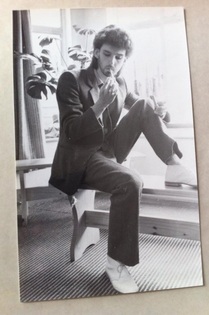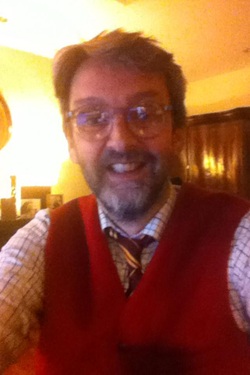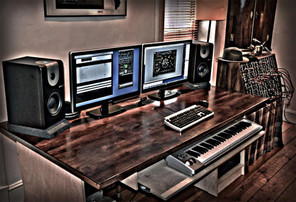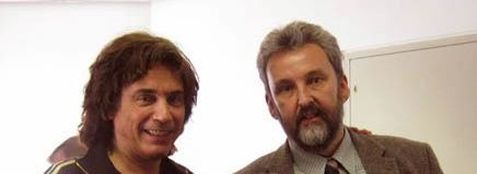
So let me say that he was a talented, brilliant and complicated man. Without his input and encouragement there would have never been an Atomic Shadow project. If you ever owned an Akai sampler, he was the guy who probably made all of the sounds that came with it. His Hollow Sun company was a provider of quality sounds for Akai samplers and he eventually transitioned to the Kontakt sampler, well after hardware had seen it's day. He designed the user interface for a ton of Akai products, later moving to Alesis when Numark bought Akai. During his years at Akai he learned to speak Japanese. Fluently.
I met Stephen in 2006 on a user forum for the Alesis Fusion. We shared a similar sense of humor and bonded over our mutual love of Genesis. I knew him for several months before he came clean and told me that he was the head sound designer at Alesis.
Stephen was the key figure in the origin story of Atomic Shadow, with the unwitting assistance of a guy named Brian Eno.
Between meeting Stephen in 2006, and sometime in 2009, I began to send him things that I had recorded from time to time. He always had the manners to act as if the mp3 had gotten lost somewhere. Never once did he offer a comment of any kind. The one time I pressed and asked him if he listened and what he thought, he told me! Bluntly, honestly and without holding back. As a result I never asked again. My efforts at sound design were ill suited to writing a song. I was taking a loop of a fan system in a building that had the bearings going out and putting it in an Akai S-612, through a chain of effects and then trying to build verse, chorus, and bridge structures from very abstract sounds. My wife would often come back to that end of the house to see what was making that horrible noise. It was me. Making sounds. She would ask me if I was making a song with the sound and I would always say, "I don't see how I could."
Late in 2009 Stephen and I came across a piece of software called Berna. It is a Mac only, software recreation of a 50s era electronic music studio. I started messing around with it one night and recorded something that was done live, in one take. Since we shared a love for the early pioneers of electronic music I sent him the mp3 of my first experiment (which became #1 on the Project One album). He wrote back within a few minutes to say that he thought it was best thing I had ever sent him. "You seem to have an ear for the abstract. I think you've found your niche. You should pursue this direction".
I assumed that he had been drinking and went to bed. Crazy Welshman.
The very next morning I encountered an interview with Brian Eno on one of the synth blogs. I love it when Mr. Eno shares his ideas because he always has something intelligent to say. I still had Stephen's email fresh in my mind as I read Eno's thoughts on inspiration and creativity. Eno said that sometimes an artist has to take his best shot and then paint a bullseye around where the arrow lands. BANG! The light came on. I was a drummer by training. The noisy one. I was never going to write a hit song. All of the sounds that were useless for songs were the end result. That was the bullseye. Pure sound.

Since I had decided to take off in a very Radiophonic direction I knew I needed a mid century inspired name. I had the vision of the Command Center as a backdrop for future videos. I knew I wanted to channel the lab coat along with that whole 50s era esthetic.I needed a Cold War sounding name. It had to be Jet or Rocket something... or Atomic something. The light came on again.
Over the next few weeks I made the first Atomic Shadow album, sending track after track to Stephen for input. Since almost all of the tracks were done in real time with no over dubbing, some experiments were more successful than others. I was very thankful that I had a friend who would give me honest feedback. He would not hold back to spare my tender feelings. Project One was completed in one massive outpouring in 5 weeks during the fall of 2009.
I have counted on his insight, support, and constructive criticism for every album. He always inspired me to dig deeper.
I have laughed out loud more during one of our Skype chats than I do when when watching 75% of the comedians on television.

Stephen's lab at Hollow Sun Towers was so organized and tidy compared to my space. The photo at the right (by Neil Fellowes) is his creative space. Something about this image of his unoccupied desk, with his tools waiting for him, makes me cry. Every time I look at it.
Such a wonderful voice, now sadly fallen silent. Far too young. I will miss him every day for the rest of my life. Goodbye Stephen.


 RSS Feed
RSS Feed
